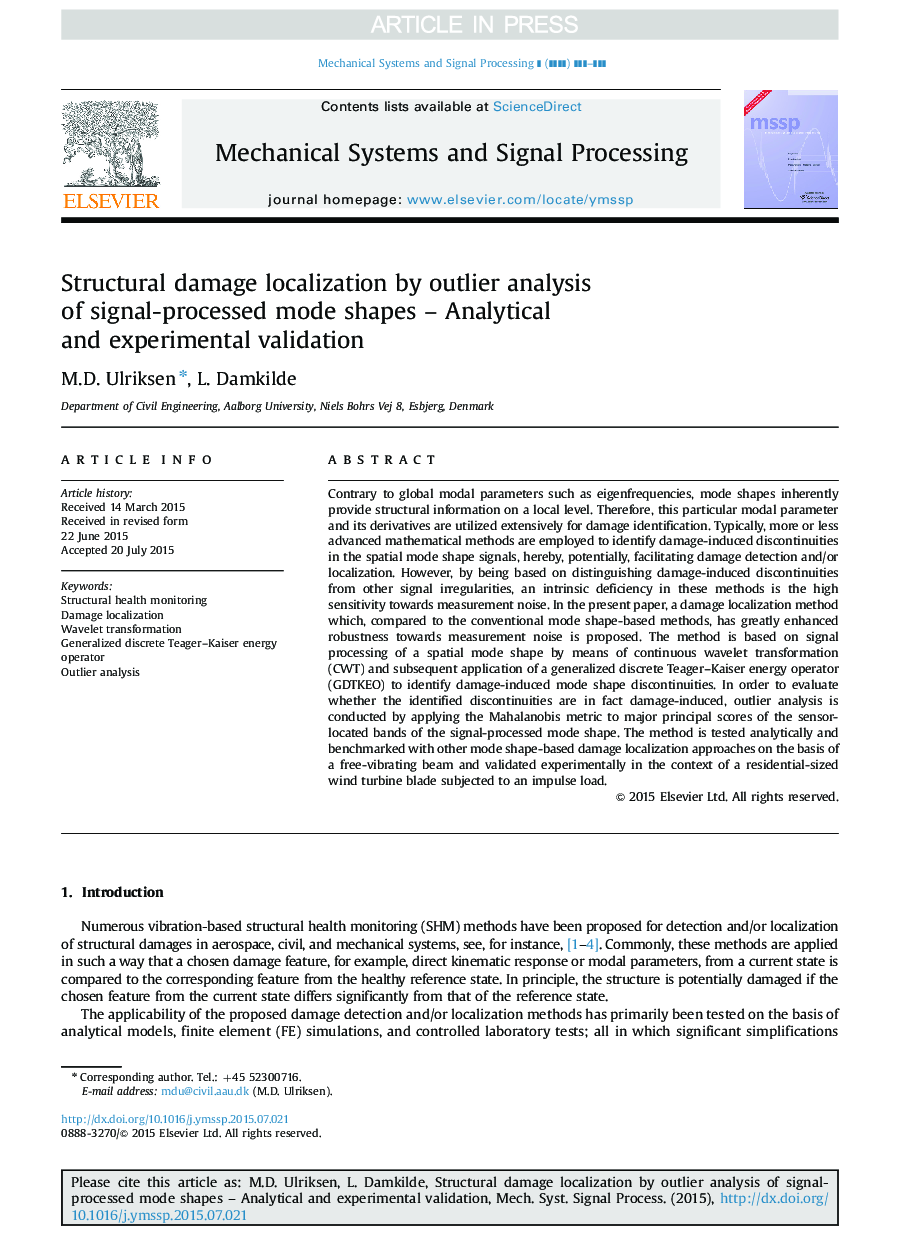| Article ID | Journal | Published Year | Pages | File Type |
|---|---|---|---|---|
| 6955559 | Mechanical Systems and Signal Processing | 2016 | 14 Pages |
Abstract
Contrary to global modal parameters such as eigenfrequencies, mode shapes inherently provide structural information on a local level. Therefore, this particular modal parameter and its derivatives are utilized extensively for damage identification. Typically, more or less advanced mathematical methods are employed to identify damage-induced discontinuities in the spatial mode shape signals, hereby, potentially, facilitating damage detection and/or localization. However, by being based on distinguishing damage-induced discontinuities from other signal irregularities, an intrinsic deficiency in these methods is the high sensitivity towards measurement noise. In the present paper, a damage localization method which, compared to the conventional mode shape-based methods, has greatly enhanced robustness towards measurement noise is proposed. The method is based on signal processing of a spatial mode shape by means of continuous wavelet transformation (CWT) and subsequent application of a generalized discrete Teager-Kaiser energy operator (GDTKEO) to identify damage-induced mode shape discontinuities. In order to evaluate whether the identified discontinuities are in fact damage-induced, outlier analysis is conducted by applying the Mahalanobis metric to major principal scores of the sensor-located bands of the signal-processed mode shape. The method is tested analytically and benchmarked with other mode shape-based damage localization approaches on the basis of a free-vibrating beam and validated experimentally in the context of a residential-sized wind turbine blade subjected to an impulse load.
Related Topics
Physical Sciences and Engineering
Computer Science
Signal Processing
Authors
M.D. Ulriksen, L. Damkilde,
